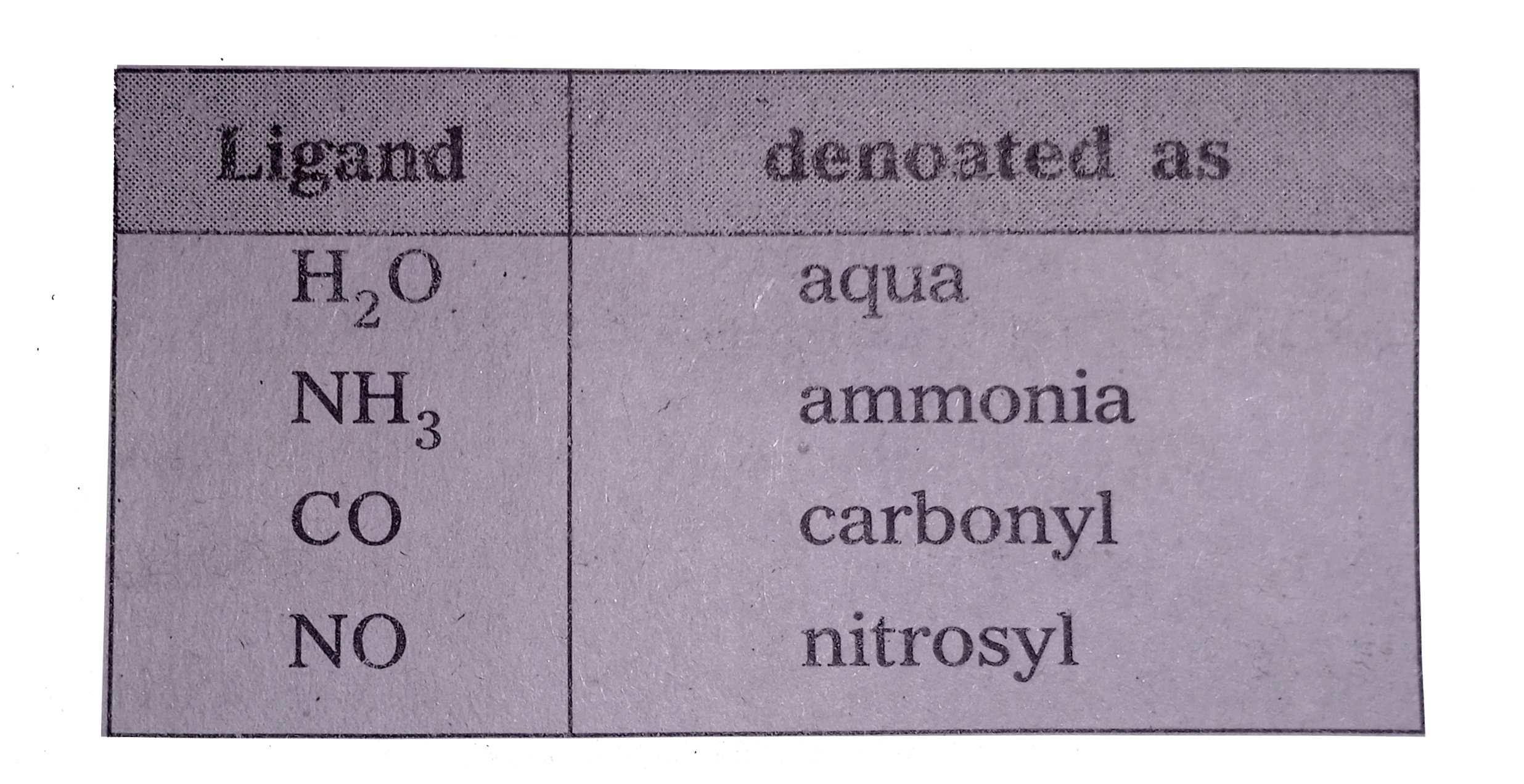Explain IUPAC nomenclature of Co-ordination compounds with suitable examples.Solution in Telugu
IUPAC nomenclature : The formula of a compound is an abreviated description of the constitution of the compound. The following rules are prescribed by IUPAC for naming of Co-ordination compounds.
i) Positive ions are named first followed by negative ions. eg. : Potassium hexacyanoferrate (II),
i) Within the Co-ordination sphere ligands are named before the metal atom/ion. However, in formulae, metal ion is written first. eg. : Tetraammine copper (II) sulphate
iii) Prefixes are used to denote the number of same ligands that the present in the Coordination sphere. Complex ions are denoted in paranthesis ( ) and prefixed by bis, tris etc.
Examples :

eg. : Cl is named as dichloro bis (ethylendeiamine) cobalt (III) chloride
iv) Ligands are named in alphabetical order.
eg. : diammine dichloro platinum (II)
v) Anionic ligands are denoted by a suffix 'O' and netural ligands are denoted by their original names.
eg. :
Exception for the above are indicated below.

vi) Oxidation state of the metal ion is indicated by Romen numerical in parenthesis.
eg. : is named as diammine silver (I) dicyanoargentate (I).
vii) If the charge of the Co-ordination entity is negative, the name of the metal ends with a suffix-ate.
eg. : mu[(NH_(3))_(4)Co(OH)(NH_(2))Co(NH_(3))_(4)]^(+)mumu[Zn(OH)_(4)]^(-2)[Co(NH_(3))_(6)]_(2)(SO_(4))_(3)K_(2)[PdCl_(4)]K_(3)[Cr(C_(2)O_(4))_(3)]
Topper's Solved these Questions
- D AND F- BLOCK ELEMENTS AND CO-ORDINATION COMPOUNDS Book:VIKRAM PUBLICATION ( ANDHRA PUBLICATION)Chapter:D AND F- BLOCK ELEMENTS AND CO-ORDINATION COMPOUNDS Exercise:INTEXT QUESTIONS
Explore 33 Videos
- D AND F- BLOCK ELEMENTS AND CO-ORDINATION COMPOUNDS Book:VIKRAM PUBLICATION ( ANDHRA PUBLICATION)Chapter:D AND F- BLOCK ELEMENTS AND CO-ORDINATION COMPOUNDS Exercise:SHORT ANSWER QUESTIONS
Explore 57 Videos
- CHEMISTRY IN EVERYDAY LIFEBook:VIKRAM PUBLICATION ( ANDHRA PUBLICATION)Chapter:CHEMISTRY IN EVERYDAY LIFEExercise:Intex questions
Explore 5 Videos
- ELECTROCHEMISTRY & CHEMICAL KINETICSBook:VIKRAM PUBLICATION ( ANDHRA PUBLICATION)Chapter:ELECTROCHEMISTRY & CHEMICAL KINETICSExercise:DAM SURE
Explore 18 Videos
Similar Questions
Silver atom has completely filled d-orbitals (4d10) in its ground state. How can you say that it is a transition element ?
View SolutionCompared to 3d series the corresponding transition metals of 4d and 5d transition series show high enthalpy of atomization. Explain.
View SolutionSleeping pills are recommended by doctors to the patients suffering from sleeplessness but is not advisable to take its doses without consultation with the doctor.Why?
Consider the effect of tranquilizers or antidepressants on the nervous system.
View SolutionDiffine conductivity of a material. Give its SI units.
View Solutionसहबहुलकीकरण क्या है? उदाहरण सहित समझाइए ।
View SolutionExplain geometrical isomerism in Co-ordination compounds giving suitable examples.
View SolutionExplain different types of isomerism exhibited by Co-ordination compounds, giving suitable examples.
View SolutionState rules for the IUPAC nomenclature of carbon compounds. Give one example.
View SolutionState rules for the IUPAC nomenclature of carbon compounds. Give one example.
View SolutionWrite the IUPAC names of the following co-ordination compounds ?
View Solutionएल्कीनो तथा एल्काइनों का IUPAC नामकरण उदाहरण सहित समझाइए।
View SolutionExplain about the steps involved in naming an organic compound as IUPAC nomenclature.
View SolutionIUPAC Nomenclature of Coordination Compounds
View SolutionName the following co-ordination compounds according to IUPAC system of nomenclature :
[Co(NH3)4(H2O)Cl]Cl2
View SolutionGive the rule for IUPAC nomenclature for branched compounds. Explain with example
View Solution

